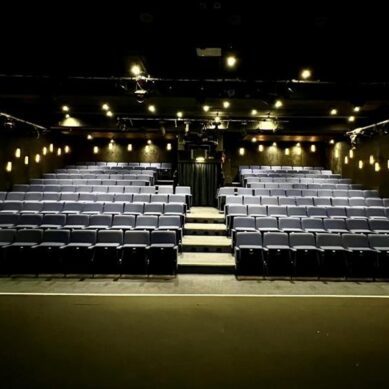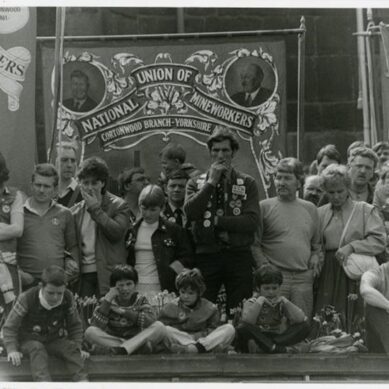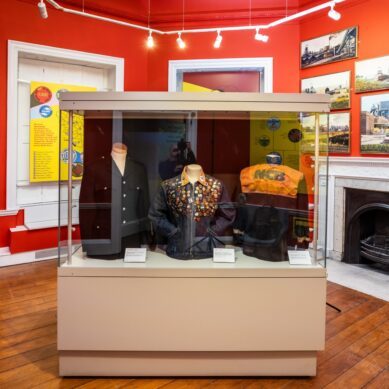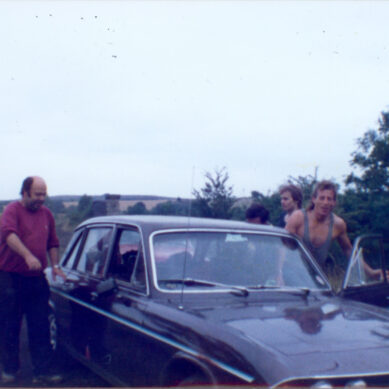We have all enjoyed the fruits of nature’s labour over the last year or so as the pandemic has encouraged us to get out and walk more. But now, the public can reap the rewards of vast funding and the extensive hard work of the team which has revitalised the parklands at Cannon Hall.
As part of the Parks for People project, a combined initiative between the Big Lottery and the Heritage Lottery Fund, Barnsley Museums received a grant of almost £3million to restore and conserve the 76 acres of parklands at the historic Cannon Hall site in Cawthorne, Barnsley. The project also received £40,000 raised by the Friends of Cannon Hall, as well as further funding from Barnsley Council and the Country Houses Foundation, taking the budget to £3.8m.
‘Restoring the Glory, Revealing the Secrets’ has been managed by Sharon Sutton who has been instrumental in securing more funding to enable the plans to be completed to their full potential.

Over the last few years, invasive work has been completed around the site to improve accessibility, renovate derelict buildings, and establish the lost views and vistas. There are of course great benefits for visitors, but a lot of the enhancements made will also enable the small team to conserve and protect the heritage of the park for the future.
The immense parkland was first developed by landscape architect, Richard Woods, in the 1760s for the Hall’s owner, John Spencer. He created an ornate walled garden that would go on to house an eclectic mix of fruit trees, along with vast sloping lawns leading down to the serene lakes. Woods’ Georgian vision was then embellished in the Victorian era to add a dream-like fairyland with follies and stone archways.
On a glorious sunny morning in May, we were given a guided tour by park ranger, Marcus Staples, who shared a knowledgeable and passionate insight into the work that has been done since the project began in 2017. It was due to be a three-year plan but, owing to Covid-19 and the influx of visitors they’ve had on site since the start of the pandemic, some jobs have been pushed back while the team focus solely on maintenance of the park.
To enable all visitors to reap the rewards of the project, there is a new tarmac path which encompasses the perimeter of the park. The old dirt paths made a large majority of the park difficult to access for visitors in adverse weather; the new path means people with wheelchairs, pushchairs and limited mobility can enjoy the full breadth of the park.
The Lakes
The exciting news is that boating will be back on the lakes for the first time in generations.

The three lakes were once a prized possession for the Spencer-Stanhope family, and each one had its respective use of fishing, swimming or boating. Sadly, over the years these ‘glittering lakes’ had become lost under reams of silt, soil and overgrowth. But thanks to an intense renovation project, the central lake can once again be used for recreation purposes with the addition of a jetty and leisure boats.
The Little Boat Company’s collection of rowing and pedal boats will bring life back to the stunning lakes in the parklands. They will be run by Jonathan whose parents had a catering concession at the Hall some 30 years ago, so it is quite fitting that he will be returning to the well-loved parklands with his own business.
“My childhood was spent exploring the parklands so it’s always been a dream to come back,” he says.
With a background in the leisure industry, Jonathan employs two outdoor sports apprentices from Barnsley College to help during peak times.
Before the boats could be used, the old lakes were dredged, with the silt used to reform the banks to their original shape. Some of the trees within the wooded area were removed to open up the vista. Improving the water quality has encouraged the aquatic habitats to thrive, with herons and geese now making the lakes their home.
The lakes are situated at the bottom of the park, with access from the corner of the car park by the children’s play area. If you’d rather stay on dry land, then why not pose for a photo in the giant deckchair which has a donation box for Barnsley Museums & Heritage Trust.
Walled Garden
The walled gardens once served as the kitchen gardens for the Hall, where fruits and vegetables would be picked for the many dinner parties hosted by the Spencer-Stanhopes at their family seat. In recent years, this area has become renowned for the many pear trees that line the walls.
Using the original plans from almost 300 years ago, head gardener, Dan, and his team of volunteers helped redevelop the walled garden to how it would have looked in Georgian times.
“All the gardeners who have worked here since it was established in the 1700s have each put their own stamp on things, so it had become a bit of a mismatch,” Marcus tells us.

One obvious difference is the removal of the clematis archway which went through the centre of the garden with a rectangular pond next to it. That pond, built in the 1980s which was leaking and the paving falling apart, has now been filled in. The new circular pond has been installed in Woods’ original location after an archaeological dig found the remains of the Georgian pond. From this, the team were able to calculate its original size and replicate it for the 21st century.
“We’re thankful that the wildlife has come back to this area, especially the ducklings that you often see running about,” Marcus says.
A lot of the plants from the walled garden have been moved and replanted to create a more open aspect. The old raspberry garden has been transformed into a modern area zigzagged with grasses and feature planting in various textures. And the old pumpkin patch is now a quiet area for families to sit and relax.
New planters have been created at a more accessible height for wheelchair users and children. They will grow veg for the school kitchen and for scavenger hunts hosted by the learning team. There will be a trail for children to follow around the walled garden, looking for ingredients for Mrs King’s recipe, as well as a potting area for younger visitors to get their hands dirty.
Within the walled gardens are a host of interesting features, such as the giant rhinoceros head that was donated some years ago. An original sun dial has also been reinstated after being in storage for many years; it was actually stolen from the Hall decades ago and was found in an auction in London!
Being a kitchen garden, there are of course a fair few greenhouses on site to grow the various fruits and vegetables. The north greenhouse on the far wall had been in a state of disrepair for many years. As part of the project, this has been restored to become a new seating area with information display boards about the many varieties of pear and fruit that line the walls of the garden.
Pleasure Grounds
Down in the Fairyland, an area designed based on one of the Stanhope children’s dreams, an archaeological dig had been done to decipher the origins of a plunge pool. Walter Spencer Stanhope had pneumonia and his physician advised him to jump in cold water once a day.
The pool is filled with fresh natural water that runs off the grounds and in it you can spot a variety of pondlife including koi carp. Through the stone archway, which has become a much-loved backdrop for wedding photographers, there is a south facing mirror pool, named because it has a perfect reflection.

Conserving natural habitats has always been an important and integral part of the project; there are hundreds of varieties of plants, trees, flowers, fruit, animals, birds, fish and amphibians on site.
Within the woodland area on the other side of the front lawn, there is now a discovery trail which will interest young and old. Can you find the den building, little twig house, or musical instruments?
Volunteers helped cut through the formerly unused area which has added a third of extra space to the parklands for families to discover. One of the volunteers, Mick, is a retired tree surgeon who has skilfully crafted a range of elements from the wood removed by the garden team.
Going through this trail will lead you to two charming old buildings which have also been excavated and cleaned up. These are the privy midden toilet and the ice house which stored ice from the nearby pond at Gardeners Cottage.

And of course, what’s a visit to Cannon Hall without marvelling at the iconic building itself. The hall is now a museum which tells the tale of the Spencer-Stanhope family and includes a range of ceramics, glass and artwork from their collection.
For more information about the park and its opening times, visit www.cannon-hall.com










